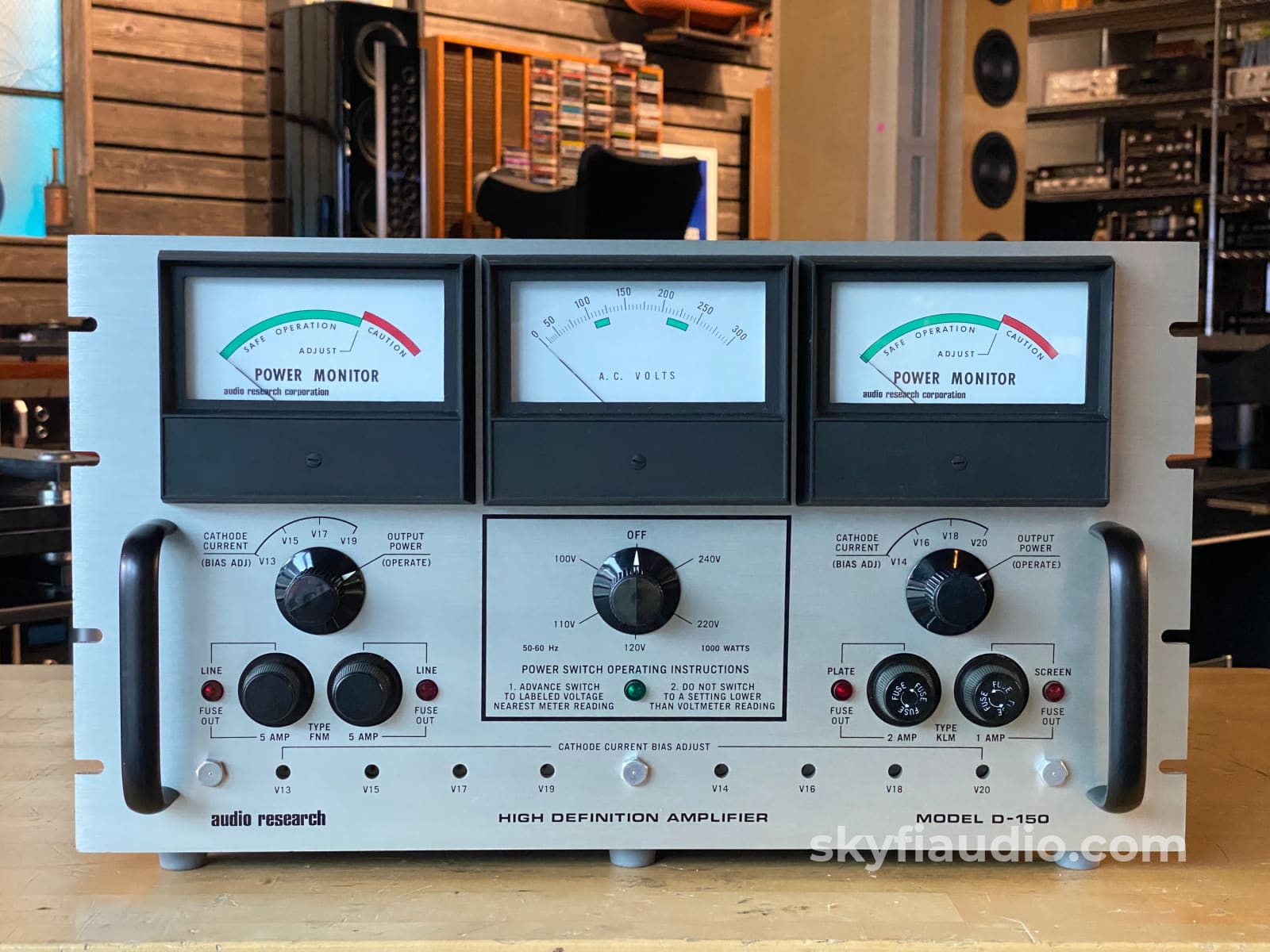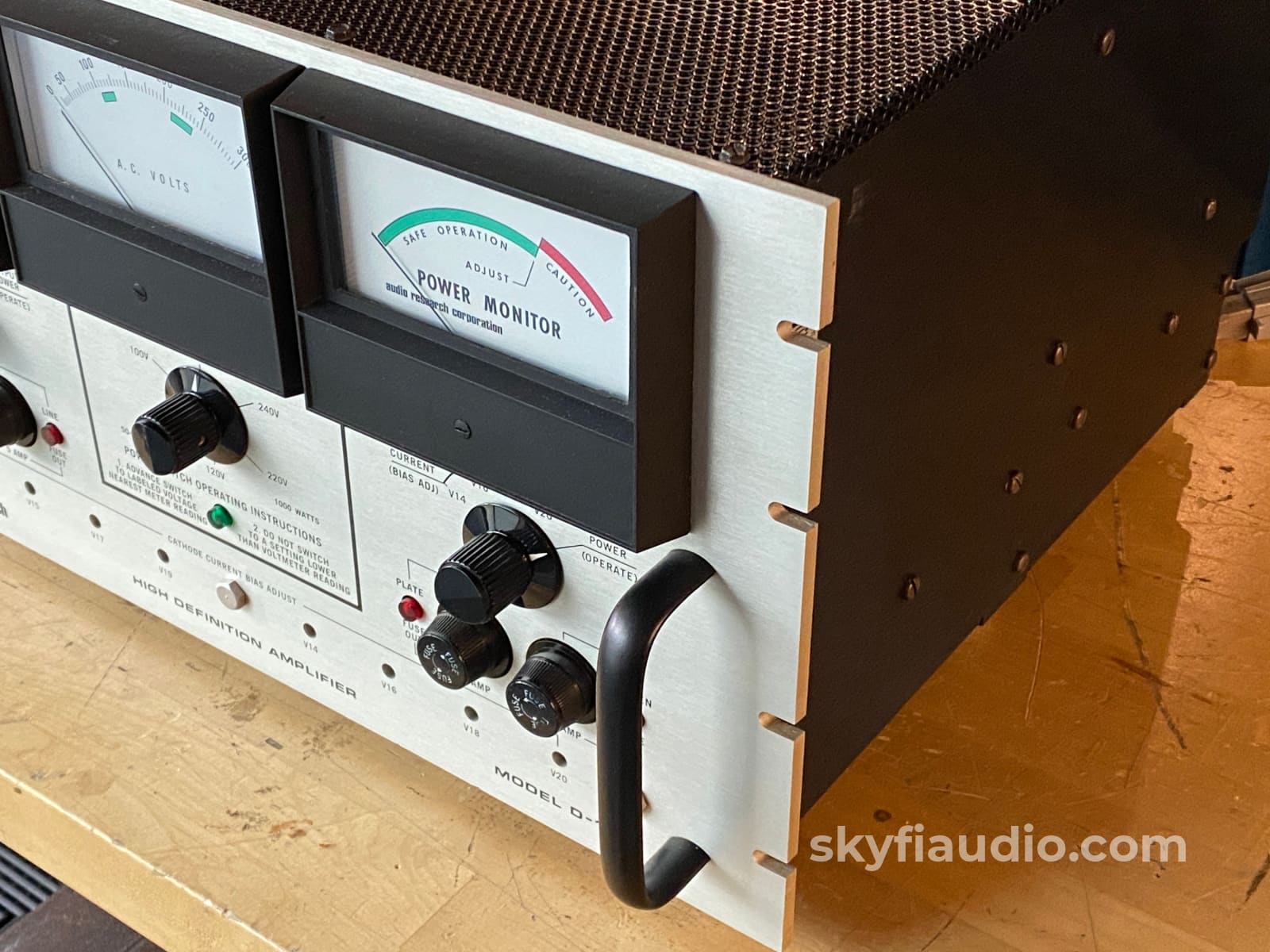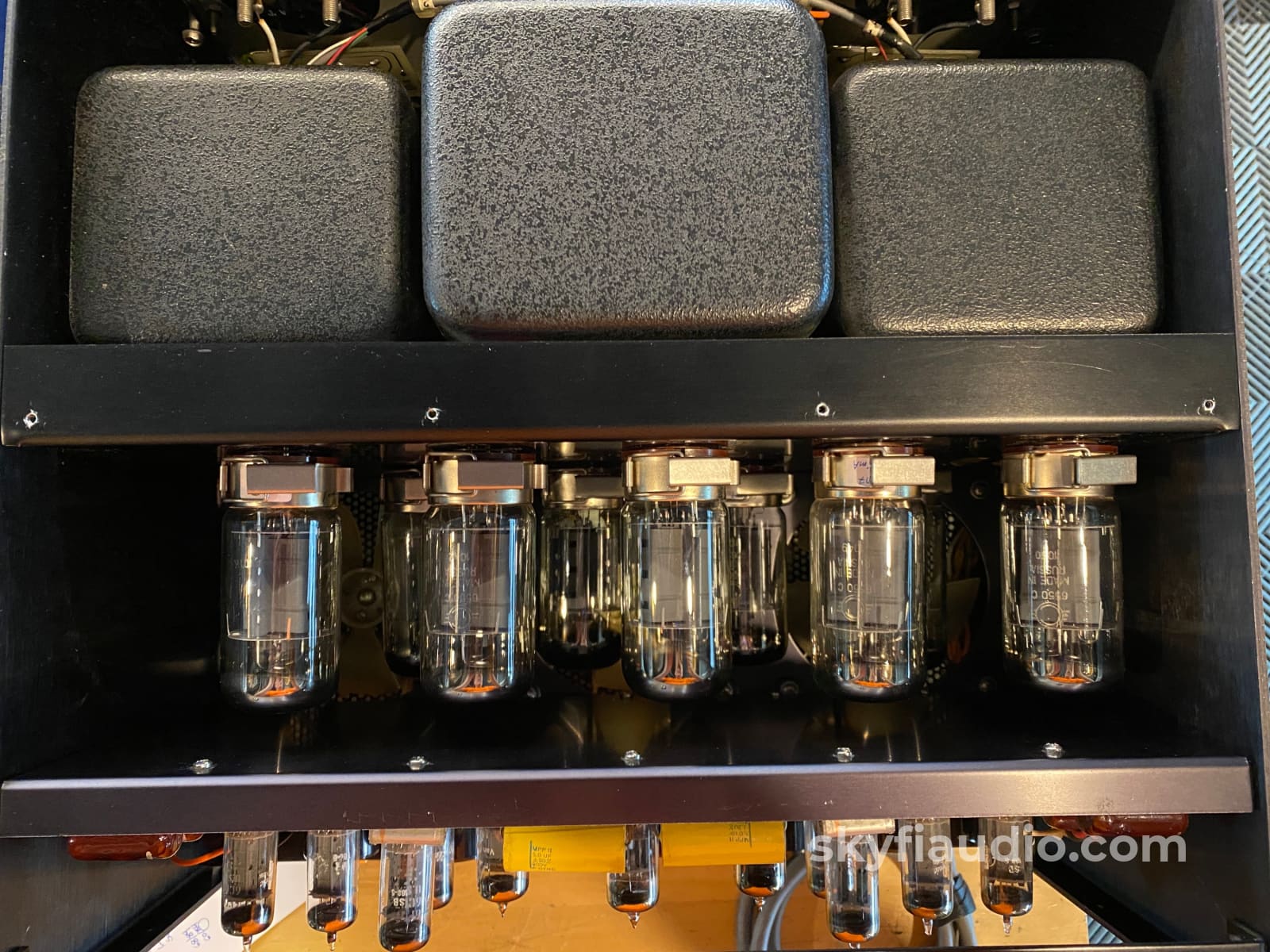
















Audio Research D-150 Vintage Tube Amplifier- Uber Rare - Serviced - Accepting Offers
General:
Here we have what is arguably the rarest and most desirable vintage tube amplifiers from ARC.
While there are a few D-79s usually available if you dig around, the big brother D-150 rarely comes up.
We've been saving this beauty in our private collection for many years, and we're now accepting offers. It's very difficult to put a price on a true collector piece so we will let the market dictate.
It's my understanding that only 200 D-150 units were produced.
This was also the world's first powerful tube stereo amplifier, rated in the 2012 "Absolute Sound Guide to Audio Electronics" as the "3rd Most Significant Amplifier of All Time".
We had our tube guru technician go through this amplifier to get it into tip-top shape by servicing it prior to listing. It is mostly unmolested except for a few critical components that were replaced for good measure. It's working as it should and sounding beautiful.
Cosmetic condition is stellar with a super clean faceplate and meters. Chassis may have a scuff here or there, but nothing notable.
SkyFi Service Notes:
• All tubes tested, two weak driver tubes replaced, output tubes replaced with two matched quads of Svetlana SET winged C 6550.
• All controls cleaned and tested.
• Unit cleaned inside and out.
• Bias adjusted to set line for all tubes, both channels test to rated power.
• NOTE: This unit had its large can capacitors replaced at some point in the past.
• This amplifier may experience ground buzz on certain systems. A cheater plug can be used to lift the ground in this situation to eliminate buzz.
SkyFi Cosmetic Notes:
• The lettering on some of the large fuse holder caps is gone or partially worn.
Brand Background:
Audio Research continues its dedication to unparalleled musical expression and crafting components of the highest quality and lasting value for its customers. Our long-term dedication to service is peerless in this industry (Audio Research, with few exceptions, can repair anything ever produced during its entire history). We continue to seek out new and exciting ways to make music more real and more enjoyable. More than just a name or a marketing tool, Audio Research has come to represent exceptional performance and long-term value. Experience Audio Research – experience High Definition®.
Ownership:
Unknown
Connections:
RCA Inputs and screw terminals for speakers
General Sound:
Smooth, uncolored, undistorted natural and clean.
Cosmetic Condition:
8/10 = Very Good. Excellent front faceplate, one minor flaw on chassis side or top.. See our detailed rating description here.
Working Condition:
Working perfectly and tested in our lab and listening room.
Included:
Just the unit and power cord.
Packing:
Will be packed using our highly developed in-house process and custom packing materials.
Reviews:
Click Here
Specs:
Power Output:
150 Watts per channel minimum RMS, into a 4, 8, or 16 ohm load
Frequency Response:
20 Hz to 20 kHz
Distortion:
Less than 0.5% at Rated Power
Input Impedance:
80K ohms at 20 Hz
30K ohms at 15k Hz
Output Impedance:
4, 8, 16 ohms
Tube Complement:
12AX7
6FQ7
6550
Damping Factor:
14 at 8 ohms (1k Hz)
Input Sensitivity:
2.2 volts for rated output
Hum & Noise:
More than 80db below rated output
Dimensions:
Front Panel: 19" Wide X 10.5" High. Chassis 16.5" Deep
Weight:
115 lbs.
Approximate Age:
1975
Link to Manual:
Click Here
The SkyFi Testing Process for Tube Amplifiers:
We start with a visual inspection of all internal components to make sure that there are no signs of heat stress or damage. Capacitors are checked for telltale signs of predictive failure including bulging, shrunken wrappers, or physical leakage. We also inspect resistors and other passive components for signs of overheating. If tube arcing has occurred in the past we can usually spot discoloration on the output tube sockets. On vintage units we often spot check select capacitors for value and ESR.
If the amplifier passes visual inspection, we move on to a full test of all of the tubes. We use an Amplitrex AT-1000 Tube Tester which is capable of testing both emission and Gm with a high degree of accuracy. We document the results of each tube and replace any weak or suspect tubes before proceeding. When we power on tube amplifiers for the first time we usually use a variac and current limited AC supply and slowly raise the voltage up to nominal mains level while monitoring plate, screen, filament, and negative bias supply voltages where applicable. If everything is in order we feed a low level test signal into the amplifier’s input and monitor its output on an oscilloscope across an 8 ohm dummy load. At this point we are just looking to verify basic function and confirm that the output transformers are not damaged. Once we have verified that the amplifier is safe to operate, we connected it to full mains power. For fixed bias amps we set the bias to manufacturer spec. For cathode biased amps we monitor the plate to cathode voltage to determine if the output tubes are operating in a safe range. Once the output section is verified we move onto bench evaluation.
We start by feeding the input of the amplifier with a low level 1KHz test signal, slowly increase its amplitude while monitoring the amplifier’s output on an oscilloscope for signs of noise, clipping, distortion, or improper channel balance. We continue increasing the signal level until the amplifier reaches clipping. At this point we take an output power measurement and compare it to the spec sheet of the amplifier to verify proper performance. We finish off the bench evaluation with a 1KHz square wave check and a 20Hz to 20KHz sine sweep to assess the amplifier’s frequency response characteristics. This battery of tests will usually reveal if the amplifier has any issues that need further attention.
Before the device leaves the bench, we perform a listening test with actual music using a variety of preferred test tracks. Our benches are outfitted with familiar monitor speakers which help us identify inconsistencies that will not always show up on our test gear. The main things that we are listening for are hum or noise with no signal present, proper center image, clicks, pops, or any other obvious undesirable audio characteristics.
If the unit passes all of these tests it is moved to our long term testing rig where we simulate real word operating conditions for 6-8 hours. For tube amps we like to run this test at least twice. This allows us to monitor the unit for signs of thermal runaway or intermittent issues that only crop up when it has fully come up to temperature. We find this step to be essential, especially for vintage units.
Choose options
